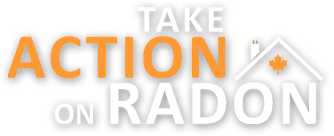Radioactive threat long gone, school board official says
BELLEVILLE – A year after high levels of radon were detected in a Belleville public school and daycare, there have been no further problems with the odourless, invisible radioactive gas, a spokesperson for the board of education said last week.
Radon is the second most common cause of lung cancer in Canada, right after smoking, according to Take Action on Radon’s website.
Radon gas is produced by the decay of uranium found in soil, water and rock, according to the Health Canada’s website. The radon gets into buildings through cracks in foundation walls and floors or gaps around pipes and cables.
Sir Winston Churchill Public School in Belleville was tested for radon in December 2013. After the tests were processed, it was determined that there were dangerously high levels in the school.
A year after the initial radon scare, Hastings and Prince Edward District School Board Controller of Facility Services Nick Pfeiffer said by email the school has returned to better levels.
“(The radon is) at normal levels, which is below 200 becquerels per cubic metre as per Health Canada guidelines,” Pfeiffer said.
No other schools in the region have had any scares in regards to radon, he said.
In order to return to acceptable radon levels, school officials were advised ventilation is an effective way to manage radon levels, said school board Communications Officer Kerry Donnell.
“Windows were opened a little bit to allow for air exchange,” she said. “Also, ventilation systems were checked to ensure they were in good working order.”
Even though the radon scare is over for the school board, the issue of radon can still affect anyone, the National Co-ordinator for the Take Action on Radon campaign Rashini Kassie said.
“Radon is present in every community, town, city and province in Canada. So I guess everyone has the potential to be impacted by high radon levels,” she said.
Kassie described what can happen to a person who is exposed to radon.
“Breathing the high levels of radon over a long period of time increases your risk of developing lung cancer,” she said.
Testing your house for radon is both simple and inexpensive. You can either hire a certified radon measurement professional, or purchase a do-it youself radon test kit which can be found in local hardware stores.
Health Canada suggests the following guidelines to test on your own:
- Make the measurement in the least-lived area in your house.
- Avoid kitchen measurements (so humidity and exhaust fans don’t affect the reading).
- Avoid small enclosed areas (drawers, cupboards).
- Do not place the test kit close to accesses to the outdoors.
- Place item a minimum of 50 cm from the floor and 20 cm from any item.
After testing for a minimum of three months, the detector can be returned to a laboratory for measurement, according to Health Canada.
 Print This Post
Print This Post







